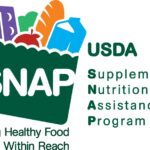Added sugars are a sneaky ingredient in many of the foods we eat every day. While naturally occurring sugars, like those in fruits (fructose and glucose) and milk (lactose), are part of a healthy diet, added sugars offer little to no nutritional value. This guide will help you identify What Foods Have Added Sugar and understand why it’s important to limit your intake.
Why Added Sugars Matter
Our bodies don’t require added sugars to function. These sugars contribute empty calories, potentially leading to weight gain and obesity. Think of your daily calorie intake as a budget; prioritize nutrient-rich foods and limit discretionary calories from added sugars.
Recommended Daily Intake of Added Sugar
The American Heart Association (AHA) suggests limiting added sugars to no more than 6% of your daily calories. This translates to approximately 100 calories (6 teaspoons) for most women and 150 calories (9 teaspoons) for men. The AHA’s recommendations encompass all added sugars, regardless of the source, including high fructose corn syrup.
Common Culprits: Foods High in Added Sugar
Identifying what foods have added sugar is the first step in reducing your intake. Here are some common sources:
- Regular Soft Drinks: Sodas are a major source of added sugars.
- Sweetened Beverages: Includes sweetened tea, coffee, energy drinks, and fruit drinks.
- Candy and Desserts: Candy, ice cream, cakes, and cookies are often loaded with added sugars.
- Sweetened Dairy Products: This category encompasses sweetened yogurts, flavored milk, and sweetened milk alternatives.
- Breakfast Cereals and Bars: Many breakfast cereals and bars contain significant amounts of added sugar.
Identifying Added Sugars: Reading Labels
To determine if a packaged food contains added sugars, consult the Nutrition Facts panel. Look for the “Added Sugars” listing under “Total Sugars.” Remember that one gram of sugar equals four calories. Therefore, if a product contains 15 grams of sugar per serving, 60 calories come from sugar alone.
If a Nutrition Facts panel is unavailable, examine the ingredient list. Sugar has numerous aliases, including:
- High fructose corn syrup
- Molasses
- Cane sugar
- Corn sweetener
- Raw sugar
- Syrup
- Honey
- Fruit juice concentrates
- Ingredients ending in “-ose” (e.g., sucrose, glucose, fructose, maltose, dextrose)
Strategies for Reducing Added Sugar Intake
Here are some practical tips for reducing your intake of foods that have added sugar:
- Read Labels Carefully: Always check the Nutrition Facts panel and ingredient list.
- Choose Whole Foods: Opt for fresh fruits, vegetables, and whole grains over processed foods.
- Limit Sugary Drinks: Replace sodas, sweetened teas, and juices with water, unsweetened tea, or sparkling water with a squeeze of lemon or lime.
- Cook at Home: Preparing your own meals allows you to control the amount of sugar added.
- Use Natural Sweeteners in Moderation: If you need to sweeten something, consider using small amounts of natural sweeteners like stevia or monk fruit.
The Bottom Line
Being mindful of what foods have added sugar is crucial for maintaining a healthy diet. By understanding where added sugars lurk and taking steps to limit your intake, you can improve your overall health and well-being. Just one 12-ounce can of regular soda, for example, contains 10 teaspoons of sugar (160 calories) with zero nutritional value. Small changes can make a big difference in your long-term health.
